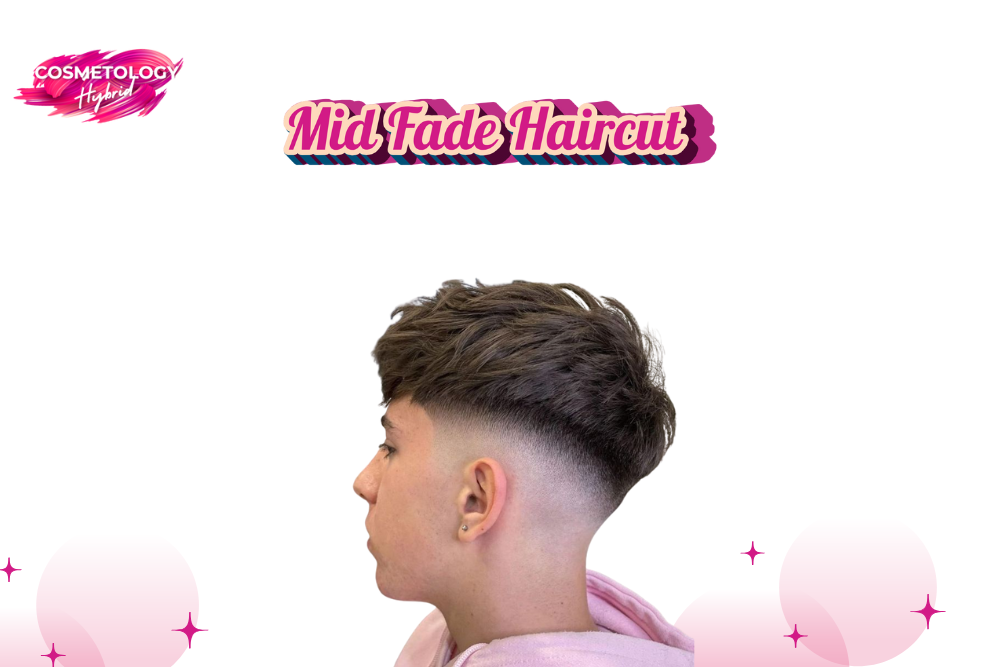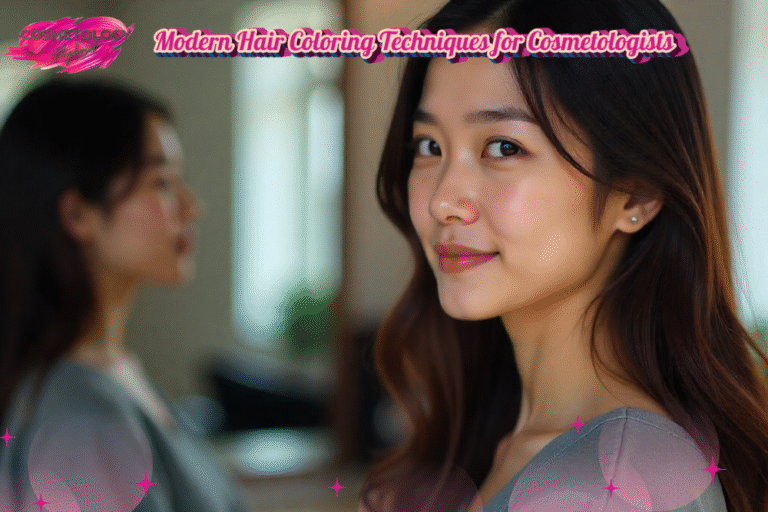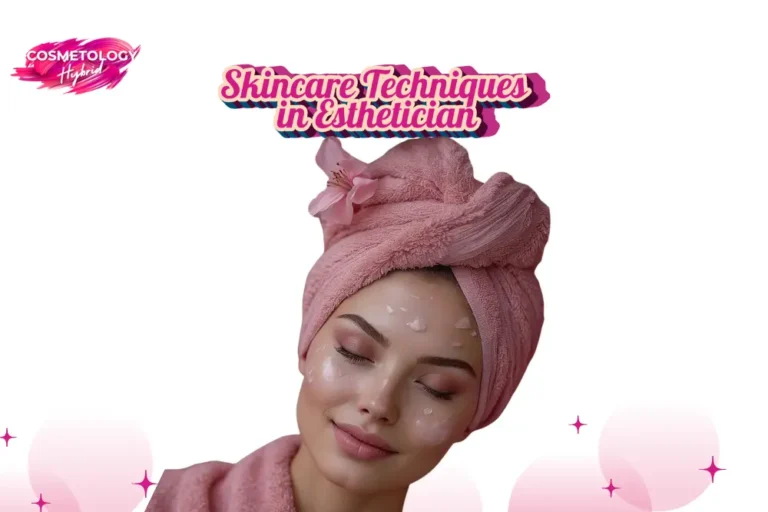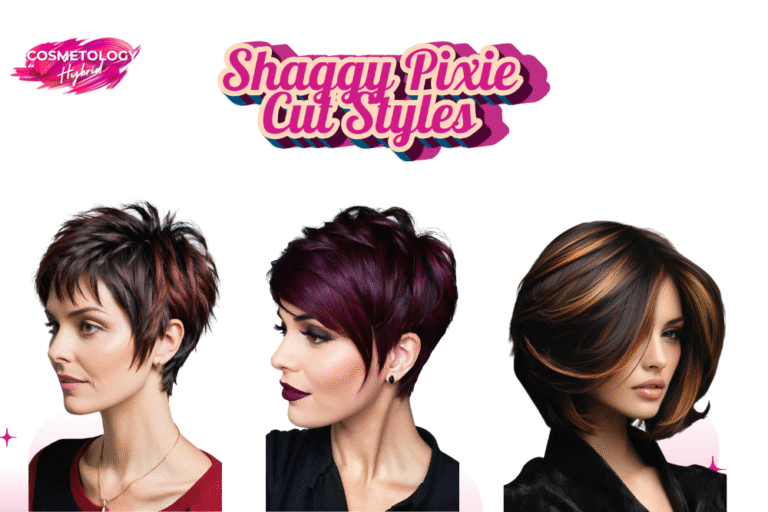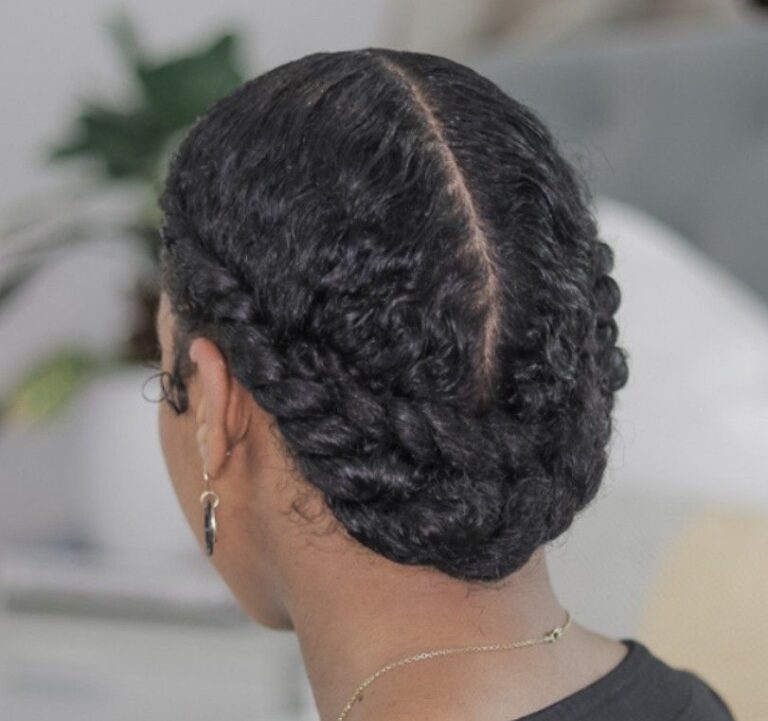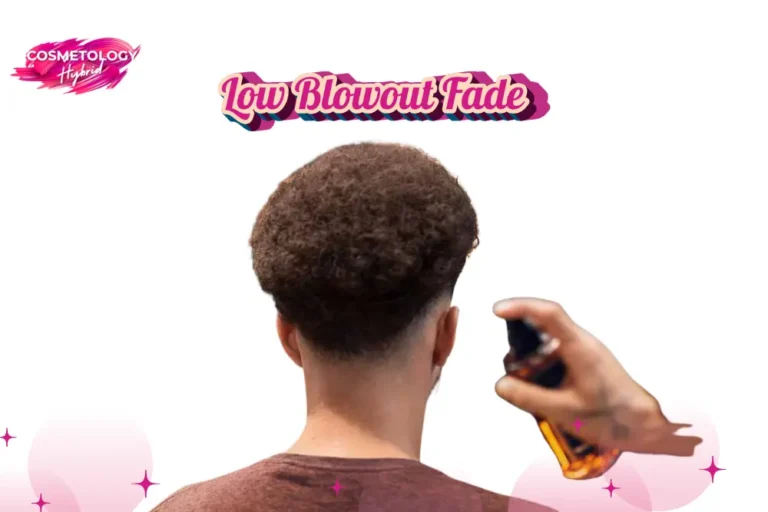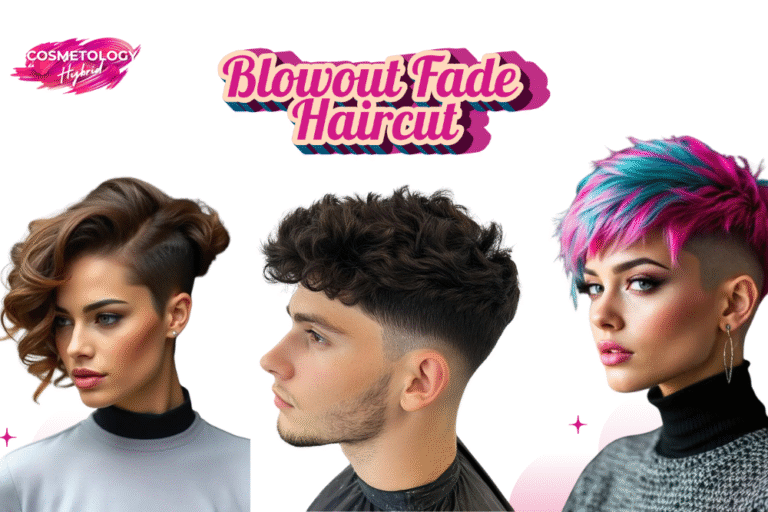Learn how the mid fade stacks up against other fades, which versions fit different hair types and face shapes, and how to style and maintain each look. You will also get step by step barber notes, product picks by hair type, and time saving tips for cosmetology students balancing school, work, and clients.
What Makes a Mid Fade Different from Other Fades
Here is the thing. In the middle of the fade family sits the mid fade. It begins roughly at the midpoint between the ear and the temple, higher than a low fade, lower than a high fade. That placement gives you contrast on the sides without stripping too much weight, so the head shape still looks balanced.
What this really means is control. A low fade can look too gentle on thick hair. A high fade can look severe on fine hair. The mid fade keeps options open on top, from neat and classic to messy and textured.
Quick technical snapshot
- Typical baseline, skin to a number 0 or 0.5 at the very bottom, then blend through guards 1, 2, and sometimes 3 as you move upward.
- Transition zone, centered around the parietal ridge’s lower half, not creeping into the crown.
- Finish, trimmer work on edges, clipper over comb or scissor over comb to erase any steps, then detail work around the neckline.
Why Mid Fade Haircuts Work For All Hair Types
- Fine or thinning hair, the contrast makes the top look fuller, especially if you keep a textured crop or light quiff.
- Straight hair, clean walls and sharp edges read polished with minimal styling.
- Wavy hair, a mid fade removes puffy bulk at the sides while letting waves live on top.
- Curly and coily hair, the fade frames curls like a picture, keeps edges crisp, and prevents triangle width at the cheeks.
- Cowlicks and growth swirls, starting the blend in the middle helps you hide problem points below and keep weight where you need it above.
Barbers often call the mid fade a face frame. It does not hide texture, it shows it off.
Classic Mid Fade Styles That Never Miss
- Mid fade crew cut, simple, clean, low upkeep.
- Mid fade side part, Ivy League vibe, neat in the office, easy to restyle after the gym.
- Mid fade pompadour, taller top, tighter sides, a vintage nod that still reads current.
- Mid fade slick back, looks sharp with straight or wavy hair when you want a tidy profile.
- Mid fade Caesar, short fringe, great for stubborn hairlines.
If a client is unsure, start with a classic. You can add texture, weight, or length on the next visit.
Trendy Mid Fade Variations Clients Ask For
- Textured crop with mid fade, choppy top, matte finish, very low maintenance.
- Curly mid fade, shaped curls on top, clean edges, works on loose waves to tight coils.
- Mid fade with beard, connect the fade to a blended beard for a strong jawline.
- Mid drop fade, the fade line dips slightly behind the ear, gives more crown coverage.
- Mid burst fade, fades around the ear and into the neckline, good with mohawks or faux hawks.
- Mid skin fade, bald at the base for maximum contrast.
- Mid taper fade, shadow fade look, not fully bald at the bottom, softer and conservative.
Quick style table
| Style | Best Hair Type | Vibe |
|---|---|---|
| Textured crop with mid fade | Straight or wavy | Trendy, casual |
| Curly mid fade | Natural curls or coils | Structured, bold |
| Mid fade with beard | Thick or full hair | Masculine, sharp |
| Mid drop fade | Any, crown cowlicks | Balanced, modern |
| Mid burst fade | Any, adventurous | Sporty, statement |
| Mid skin fade | Any, likes contrast | Clean, high impact |
| Mid taper fade | Office friendly needs | Subtle, classic |
Match The Mid Fade To Face Shape And Lifestyle
Face shapes
- Square, mid fade comb over or side part softens corners, keep a touch more length at the temples.
- Round, mid fade with pompadour or quiff adds height, avoid heavy width at the cheeks.
- Oval, most styles work, pick based on lifestyle and hair texture.
- Heart, leave some side weight at the top of the fade, pair with a beard blend to balance a narrower chin.
- Diamond, keep the fade mid, not high, and preserve temple weight so the head does not look too narrow.
Lifestyle filter
- Busy professional, mid fade comb over or slick back, two to three week tune ups.
- Student or athlete, textured crop or curly mid fade, quick style, sweat friendly.
- Creative or on camera, drop fade or mid skin fade with clear edges, strong profile lines.
Maintenance Tips For A Fresh, Clean Mid Fade
- Refresh timing, every 2 to 3 weeks for most clients, every 1 to 2 weeks for skin fades or tight crops.
- At home care, gentle shampoo, light conditioner two or three times weekly, daily water rinse is fine.
- Styling routine, towel dry, apply a pea sized amount of product, blow dry if you want lift, then finish with a touch more product.
- Neckline and beard, quick edge cleanups between full cuts keep the look crisp.
- Simple rule, the cleaner the sides, the better the whole shape reads.
Mid Fade vs Low Fade vs High Fade, Plus Taper, Drop, And Burst
- Low fade, starts just above the ear, very subtle, safest for conservative settings.
- Mid fade, sits in the middle, most balanced and adaptable.
- High fade, starts above the temple area, bold and dramatic, best when you want strong contrast.
- Taper fade, focuses on the edges only, sideburns and neckline, leaves most side length intact.
- Drop fade, the fade line dips behind the ear, keeps more coverage at the crown.
- Burst fade, circles the ear and bursts into the neckline, pairs well with mohawk shapes.
Barber How To, Clean Mid Fade, Step By Step
- Consultation, ask how they style, where they part, how often they maintain, and how strong they want the contrast.
- Set the baseline, trimmer or foil shaver at the very bottom if doing skin, or clipper lever closed with a number 0 or 0.5. Keep the baseline even, do not chase mistakes upward.
- First guideline, number 1 guard, lever open, run a neat line around the head at mid height.
- Create the blend, erase the bottom line using the lever and half guards, then move to guard 1.5 and 2 as you climb. Use short strokes, work in panels.
- Refine weight, guard 2 to 3 where needed, clipper over comb at the transition to the top so you do not punch holes.
- Top work, scissor work or point cutting to add texture, respect cowlicks, cut for the way the hair lays when dry.
- Detail, trimmer edges, remove shadows with the corner of the blade, check symmetry in the mirror, then finish with product.
- Style and teach, show the client how much product to use and how to apply it, palms then fingertips, front to back, then shape.
Styling Products That Play Nice With A Mid Fade
- Matte paste or clay, texture and grip for crops and quiffs, best on straight or wavy hair.
- Cream, soft control for longer tops or curl definition without crunch.
- Pomade, water based, shine and control for slick backs or side parts.
- Sea salt spray or mousse, light volume pre styler before paste or clay.
- Hair spray, set pompadours and comb overs after shaping.
- Heat protectant, before any blow drying or hot tools.
Choose product by hair type first, then by style goal. Heavy gels can crush fine hair, thick clays can look chalky on very tight curls, adjust amounts accordingly.
Client Communication, How To Ask For A Mid Fade
- Say mid fade and clarify how tight at the bottom, skin, zero, or low guard.
- Point to where you want the fade to live, middle of the sides, not too high, not too low.
- Describe the top, textured and messy, neat side part, longer slick back, or short Caesar.
- Mention beard, connect, taper, or leave full.
- Bring one photo, not ten, and say what you like about it, the sides, the length on top, the neckline.
Common Mistakes To Avoid
- Racing the blend too high, you lose head shape and top support.
- Skipping the lever work, lines stay visible and look choppy.
- Over texturizing fine hair, the top collapses.
- Under moisturizing curls, frizz replaces definition.
- Ignoring maintenance, even great fades look tired after three weeks.
For Cosmetology Students, Stay Motivated When Life Gets Messy
School, clients, part time shifts, it adds up. Keep your eyes on skill growth you can measure. One clean fade. One faster blowout. One better consultation. Wins stack fast when you track them.
Small gestures matter. A thank you text, a quick check in before the next visit, a note about the product that worked, these build loyalty faster than discounts.
Read out guide about Shaggy Pixie Cut.
Tips For Balancing Cosmetology School And Part Time Work
Here are the best time management tips for cosmetology students:
- Calendar like a pro, block class, study, practice, and clients. Protect those blocks.
- Theme your days, cutting practice on Tuesday, color theory on Wednesday, styling reps on Friday.
- Batch similar tasks, prep your kit for the whole week, wash tools in one go, refill sprayers and product decants at the same time.
- Track reps, number of fades, time per service, common mistakes, note what improved.
Time Management For Beauty School Students
Keep it simple. Pick three priorities per day. Example, attend class, practice one new technique, serve two clients or models. That is it. Repeat. Consistency beats marathon sessions that burn you out.
Sample weekly rhythm
- Mon, class and mannequin work, one hour of clipper control.
- Tue, two model cuts, log timing and photos.
- Wed, theory study, sanitation checks, kit reset.
- Thu, one salon observation shift, note two techniques to try.
- Fri, styling and finishing reps, blow dry timing drills.
- Sat, client day if allowed, quick follow up messages that night.
- Sun, rest, five minute plan for next week.
Working In A Salon While In Beauty School
Yes, it is doable. Assistant roles are perfect, you learn real salon flow without the full pressure. Protect your study blocks, keep your service list realistic, and remember the real goal, graduate with confidence and repeatable skills.
Quick FAQs, Voice Search Friendly
Q1. How often should I get a mid fade trimmed.
Every 2 to 3 weeks for most people, every 1 to 2 weeks for skin tight versions.
Q2. What do I ask my barber for if I want a balanced fade.
Ask for a mid fade, say how tight at the bottom, then describe the top style and beard plan.
Q3. Which mid fade works for curls.
A curly mid fade with length on top and a clean edge line, finish with cream or light mousse.
Q4. Is a mid fade professional enough for the office.
Yes, pair it with a comb over, side part, or slick back and keep edges clean.
Q5. What products work best with a textured crop.
Matte paste or clay on towel dried hair, a light salt spray underneath if you want extra lift.
Q6. How do I keep my fade sharp between visits.
Edge the neckline and cheek lines, use a soft brush and a touch of product, avoid over cutting at home.
Q7. Can I combine a mid fade with a beard.
Yes, blend the sideburn into the beard, taper the cheek and neckline for a clean transition.
Q8. What is the difference between a mid fade and a taper fade.
Mid fade removes more side length across the head, taper fade focuses only on the edges and neckline.
Q9. Best mid fade for a round face.
Mid fade with height on top, quiff or pompadour, avoid heavy width at the cheeks.
Q10. I am a student with little time, which style is lowest maintenance.
Textured crop with a mid fade, quick to style and forgiving as it grows.
If you are serious about mastering mid fades and every other core haircut, the best move is structured training. Hybrid Cosmetology School offers both a Cosmetology Program and a Barbering Program, designed to give students the exact skills barbers and stylists use every day in shops and salons. Whether you want to specialize in fades or build a full-service cosmetology career, the programs give you the technical foundation, client experience, and industry support to succeed.

